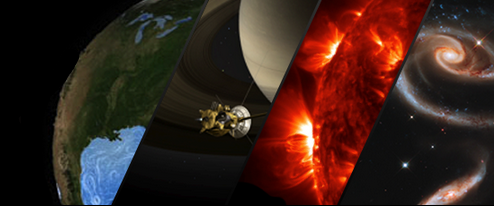New online science resource available for educators, students and anybody willing to learn

NASA started a new online science resource for teachers and students to help bring Earth, the solar system, and the universe into their schools and homes called NASA Wavelength.
The site features hundreds of resources organized by topic and audience level from elementary to college, and out-of-school programs that span the extent of NASA science. Educators at all levels can locate educational resources through information on educational standards, subjects and keywords and other relevant details, such as learning time required to carry out a lesson or an activity, cost of materials and more.
Stephanie Stockman, education lead for NASA’s Science Mission Directorate (SMD) in Washington said:
“NASA Wavelength not only lets users find nearly everything they want to know about NASA science, but it also allows them to provide direct feedback to NASA to enhance our products. This truly is a living, digital library of resources that will allow educators to find and share the best of NASA science education resources to advance their teaching.”
Wavelength features peer-reviewed resources developed by this community, including award-winning curriculum tools, activities that allow students and teachers to learn about and participate in NASA missions, exhibits and planetarium shows and more.
The site offers an innovative way to keep up with the latest developments in Earth and space science education. Users will be able to receive email updates on new content, and share the latest information through social media and email.
Through featured selections highlighted on the homepage, educators can identify resources relevant to specific themes and current events, such as Mars-related activities and lessons for educators interested in teaching about NASA’s Curiosity rover or using Earth science resources to celebrate Earth Science Week all year.
The Space Sciences Laboratory and Lawrence Hall of Science at the University of California, Berkeley, the Institute for Global Environmental Strategies, and the Adler Planetarium worked with educators across the country to define, test and launch Wavelength. Scientists and educators who comprise SMD’s education and public outreach community coordinate the continued development and upkeep of the site.
“This site further demonstrates NASA’s commitment to share our science with everyone,” Stockman said.
NASA’s Science Mission Directorate seeks new knowledge and understanding of Earth, the sun, solar system and the universe from the vantage point of space. The directorate also constantly looks for inventive ways to reach out to the public using museums, classrooms, science centers and home schools.
Though Wavelength’s primary audience is in the field of educators and students it provides valuable information and topics for all of us willing to learn.

O My Universe finally a site that is easy to understand. Looking thru it is fantastic it covers all education levels from Kindergarten to College level studies and teaching. Some NASA site can be a bit daunting but this one is the best so far. Finally the brain trust has done something that we can all use easily. Go NASA.